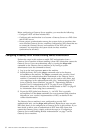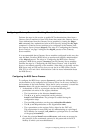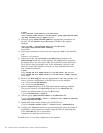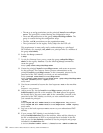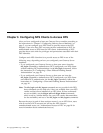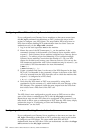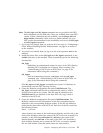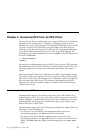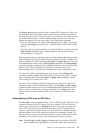
Chapter 3. Configuring NFS Clients to Access DFS
After you have configured at least one Gateway Server machine according to
the instructions in “Chapter 2. Configuring Gateway Server Machines” on
page 5, you can configure your NFS clients to provide access to the DFS
filespace. Users who have DCE accounts can then authenticate to DCE for
authenticated access to DFS from the NFS clients. Authenticating to DCE
provides these users with the privileges and permissions associated with their
DCE identities.
Configure each NFS client that is to provide access to DFS in one of the
following ways, depending on how you configured your Gateway Server
machines:
v If you configured your Gateway Servers so that users cannot issue the
dfs_login command to authenticate to DCE (configured your NFS clients
without enabling DCE authentication via the dfs_login command), follow
the instructions in “Configuring a Client Without Enabling Remote
Authentication” on page 14.
v If you configured your Gateway Servers so that users can issue the
dfs_login command to authenticate to DCE (configured your NFS clients
and enable DCE authentication via the dfs_login command), follow the
instructions in “Configuring a Client and Enabling Remote Authentication”
on page 14.
Note: The dfs_login and dfs_logout commands are not provided with DFS;
these commands can be used only if they are available from your NFS
vendor and have been installed on an NFS client. If these commands
are not available, use the dfsgw add and dfsgw delete commands,
which work in a similar fashion. See your NFS vendor documentation
for the availability and use of the dfs_login and dfs_logout commands.
Because the steps in each of these sections mount /... on an NFS client, users
who do not have DCE accounts can still use the NFS client for
unauthenticated access; see “Authenticated Access to DFS” on page 18 for
more information about authenticated access.)
© Copyright IBM Corp. 1989, 1999 13




